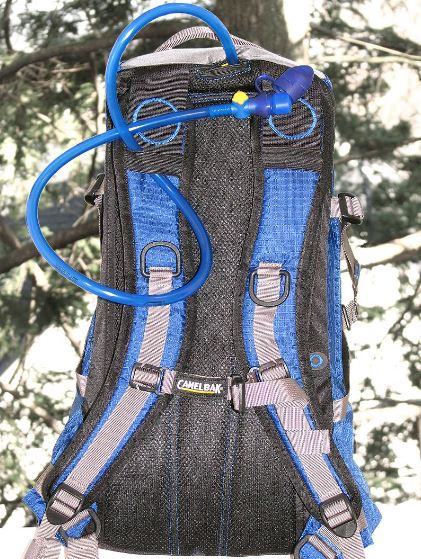Essential Guide to Hydration Pack Safety and Hygiene: Tips for Cyclists

Key Point Summary of Hydration Pack Safety and Hygiene:
- Importance of Regular Cleaning: Emphasize how regular cleaning prevents bacterial growth and maintains hydration pack safety.
- Proper Usage and Maintenance: Highlight best practices for using hydration packs during various cycling activities.
- Choosing the Right Pack: Offer guidance on selecting a hydration pack suitable for different cycling disciplines.
As a master’s cyclist with a wealth of experience in racing and riding across a range of disciplines like mountain biking, gravel biking, cyclocross, and more, I’ve come to appreciate the critical role of hydration pack safety and hygiene. Whether you’re a beginner or have some experience, understanding how to maintain your hydration pack is vital for both your health and performance.
Regular Cleaning is Crucial
Reflecting on hydration pack safety, I learned a crucial lesson about regular maintenance. After a particularly muddy cyclocross race, I carelessly stored my hydration pack without proper cleaning. The consequence was alarming – a mold-infested reservoir, resulting in a repulsive taste that lingered stubbornly. This experience taught me that neglecting to clean a hydration pack can lead to the growth of harmful bacteria, posing a health risk. I now understand the importance of emptying and rinsing the pack after each use, especially in warm weather when bacteria thrive.
To ensure thorough cleanliness, I use a mild soap and a brush to scrub the interior, paying close attention to hard-to-reach areas where mold can hide. The critical final step is to dry the pack completely before storage, as any residual moisture is a potential breeding ground for bacteria. This routine has become a crucial aspect of my cycling regimen, reinforcing the importance of hydration pack safety for my health and the longevity of the gear.
When cleaning a hydration pack, it’s important to use a mild soap that won’t damage the materials or leave residue. Some commonly recommended brands for this purpose include:
- Dr. Bronner’s Pure-Castile Liquid Soap: Known for its natural ingredients and gentle formula, it’s effective and safe for cleaning hydration packs.
- Seventh Generation Free & Clear Dish Liquid: This soap is free from fragrances and dyes, making it a safe choice for sensitive materials.
- Dawn Free & Clear Dishwashing Liquid: Although slightly stronger, it’s still gentle enough for most hydration packs and very effective at removing grease and grime.
- Campsuds Biodegradable Soap: Often used by campers and outdoor enthusiasts, this soap is versatile and gentle on both gear and the environment.
- Mild Baby Shampoo: Any brand of baby shampoo is typically gentle enough to clean hydration bladders without leaving harmful residues.
Remember, the key is to use a small amount of these mild soaps and thoroughly rinse the pack to ensure no soap residue remains.
Proper Usage and Maintenance
During a grueling gravel ride last summer, I realized halfway that my hydration pack was leaking. It turned out to be a loose hose connection, something I could have easily avoided with regular checks. Always inspect your pack before heading out – check for leaks, worn-out parts, and ensure everything is tightly secured. And when it comes to filling it, avoid liquids that might promote bacterial growth. Stick to water or cycling-specific hydration mixes and avoid sugary or dairy-based drinks.
Another tip? Don’t overfill your pack. I once thought more water equated to better hydration, but it only resulted in an uncomfortably heavy load and a strained back during a mountain bike trail. Learn to estimate the amount of water you’ll need based on the duration and intensity of your ride.
Step-by-Step Checklist for Pre-Ride Inspections:
- Inspect the Reservoir:
- Check for any cracks, holes, or signs of wear that could lead to leaks.
- Ensure the seal of the reservoir closure is intact and functioning properly.
- Examine Hoses and Connections:
- Look for any damage or wear on the hoses.
- Make sure all connections, including where the hose attaches to the reservoir and the bite valve, are secure and leak-free.
- Check the Bite Valve:
- Inspect the bite valve for cracks, tears, or signs of degradation.
- Test the valve to ensure it opens and closes properly, preventing any unwanted leaks.
- Evaluate Straps and Fit:
- Inspect the straps for fraying or tearing.
- Adjust the straps to ensure the pack fits snugly yet comfortably, without restricting movement.
- Look Over Additional Features:
- If your pack has extra pockets or compartments, check them for damage or malfunctioning zippers.
- Ensure any added features like gear loops or reflectors are secure and intact.
- Cleanliness Check:
- Make sure the pack and reservoir are clean and free from any residue or mold, especially if it hasn’t been used recently.
- Testing:
- Fill the reservoir with a small amount of water and check for any leaks.
- Wear the pack and move around to ensure comfort and functionality.
By routinely performing these checks, you can catch potential issues before they become problematic during your ride, ensuring a safer and more enjoyable experience.
Choosing the Right Pack
Selecting the right hydration pack can be overwhelming, but it’s essential for a comfortable ride. For shorter, intense rides like cyclocross, a smaller pack is more practical. You need something that stays put and doesn’t weigh you down. On the other hand, for long endurance rides or mountain biking adventures, a larger pack with more water capacity and storage for tools and snacks is preferable.
Remember, a good fit is crucial. I recall a friend who had to cut short a ride due to chafing from an ill-fitting hydration pack. Ensure your pack fits snugly but comfortably, with adjustable straps to accommodate different layers of clothing.
Personal Hygiene and Health
Cycling hygiene extends beyond your gear. As a cyclist, I’ve learned that personal hygiene is equally important. Always clean your hands before handling your hydration pack, especially during long rides where you might be eating as well. I carry a small hand sanitizer in my pack for this purpose.
FAQ
Are hydration packs good for you?
Yes, hydration packs are generally safe to use, provided they are properly maintained and cleaned. Regular cleaning and inspection for leaks or damage ensure safe and hygienic hydration, especially important during extended outdoor activities.
How long can you keep water in a hydration pack?
You should ideally not keep water in a hydration pack for more than 2-3 days. After that, it’s recommended to empty, clean, and dry the pack to prevent bacterial growth and maintain hygiene. For longer storage, it’s best to dry the pack completely.
Can I wear a hydration pack?
Yes, you can wear a hydration pack. It’s a convenient way to stay hydrated, especially during outdoor activities like hiking, biking, or running. Just ensure it fits comfortably and suits your activity needs.
Conclusion
To sum up, maintaining your hydration pack isn’t just about the longevity of your gear, but also about your health and comfort while riding. Regular cleaning, proper usage and maintenance, and choosing the right pack are key. Remember, a well-maintained hydration pack can be the difference between an enjoyable ride and an uncomfortable one.
So, take the time to care for your hydration pack, and it will take care of you on your cycling adventures.
John






